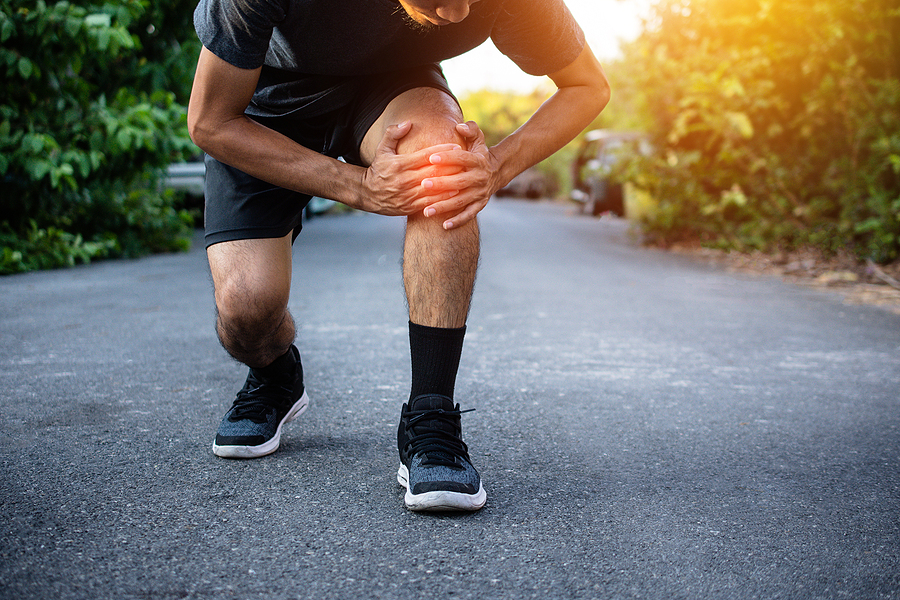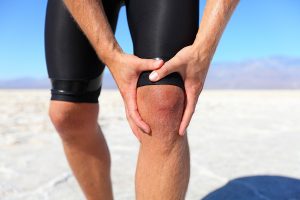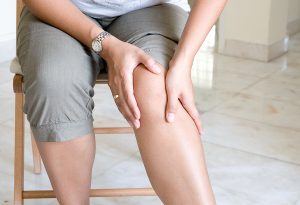The anterior cruciate ligament (ACL) is one of the main ligaments in your knee. It’s the ligament that connects your shinbone and thighbone. Those ligaments form an X across the back of your knee, connecting the end of the thighbone to the right and left sides of the shinbone.
As it’s one of the main supports when it comes to your knee’s stability, any injury can be devastating. It’s also one of the most common injuries to occur with sudden stops, jumps, and spins.
The National Institute of Health reports that around 1 out of every 3,500 Americans suffers an ACL injury each year. Of those who injure their ACL, around 400,000 people end up needing reconstructive surgery. Prevent injury using our tips and insights on ACL injuries.
Signs You’ve Injured Your ACL
You have the joint where the tibia (shinbone), femur (thighbone), and kneecap (patella) meet. Those bones require strong ligaments to hold them in place, but there’s also a lot of strain put on this joint. When you spin around, jump, or stop suddenly, it’s the ACL that takes the brunt of the force.
You don’t even have to be engaged in a sport to damage your ACL. You could be walking ahead of your leashed dog and have your dog suddenly lunge towards a squirrel. That sudden stop and spin motion causes strain. You’re going down the stairs and miscount the steps. That sudden strong landing is damaging. If you have an ACL injury, you’ll experience some or all of these symptoms.
- Difficulty walking due to knee pain.
- Knee pain that makes it hard to bend or straighten your lower leg.
- Pain that’s focused on the back of your knee.
- A popping sensation or sound when you stop or jump.
- Swelling occurs within two or three hours of the knee injury.
- Weakness or buckling in the knee when you try to put weight on it.
Those are key signs that you’ve injured your ACL. If you experience any of them, make an appointment to see an orthopedist. While a mild ACL injury will heal in time, a torn ACL must be repaired ASAP. A partial tear can take upwards of nine months to heal, and the sooner you have your knee stabilized, the better it is for your recovery.
Main Causes of ACL Injuries and Their Treatments
Most ACL injuries are caused by sports, either professional or recreational sports. Recreational sports often cause more injuries due to the lack of supervision from a trainer. People who are playing sports for fun may not invest the same amount of time in warm-ups, cool-downs, and practices before a game. That heightens the risk of an injury.
The movements that lead to ACL injuries are as follows.
- Abrupt stops
- Direct blow to the knee
- Overuse in something repetitive like tap dancing.
- Quick changes in direction following an abrupt stop
- Sudden pivots with one foot planted
ACL tears can also occur when you’re seated. For example, you’re driving down the road and someone crashes into you. That sudden stop with your knee firmly on a gas pedal, brake, or floor can damage the ACL.
When there is an ACL injury, it’s going to be one of three grades.
- Grade 1 (ACL Sprain) – The ACL is damaged and stretched, but that injury doesn’t decrease the stability of the knee.
- Grade 2 (Partial ACL Tear) – The ACL is stretched and is impacting the knee’s stability.
- Grade 3 (Complete ACL Tear) – The ACL is stretched so far that it tears into two pieces and the knee joint is now completely unstable.
There’s a fourth ACL injury that occurs in children. Tibial spine avulsion ACL occurs when the ACL is fine, but the bony area on the tibia that the ACL attaches to breaks away from the bone. This type of ACL injury needs medical attention to restore stability to the knee.
Many ACL injuries need time and immobility to heal. An ACL sprain or partial tear is treated by using a knee brace to support the knee while it heals. Physical therapy is highly recommended to help strengthen the joints and learn ways to avoid reinjuring the knee.
Complete tears often require surgery. This is a decision to make with your orthopedist as the recovery time is often long. You need to be willing to put in the effort during your recovery in order to help the ACL heal and become just as strong as it was years ago.
If a child has an ACL injury, surgery may not be recommended, especially if the bones haven’t stopped growing. Parents need to make sure their child follows the orthopedist’s care instructions to avoid worsening the injury.
Tips for Recovering From ACL Injuries
What do you do when you’ve injured an ACL? We feel it’s important to start with a trip to Premium Sports & Orthopedics and have a doctor determine if it is a sprain, partial tear, or complete tear. A proper diagnosis helps lay the groundwork for the best outcome and treatment plan.
You’ll spend a long time making sure you don’t overwork your knee joint. Follow the RICE protocol for several days or as long as your doctor recommends.
RICE Protocol
RICE (Rest, Ice, Compress, Elevate) is used to ensure you’re not putting too much weight on your knee, as well as keeping the swelling down. Apply an ice pack for approximately 20 minutes every other hour. Keep your knee wrapped in a compression wrap or bandage, and prop your knee when you’re resting.
Manage Pain
Your body heals best when you’re not focused on the pain. Use over-the-counter NSAID medications like ibuprofen to help manage pain. Ice packs also help with the swelling that increases pain.
See a Physical Therapist
Keep your physical therapy appointments. This is essential for healing correctly. You learn how to complete exercises that help ligaments strengthen without reinjuring your ACL. Make sure you do the recommended exercises at home, too.
Wear Your Brace as Recommended
Most patients with ACL injuries wear a knee brace for a while. If you’re also instructed to use crutches to keep weight off your knee, make sure you have your crutches nearby at all hours. If you’re in bed sleeping, your crutches should be within reach and not left in another room.
Get Surgery if It’s Recommended
Surgery is always a last resort, but make sure you talk to your doctor about the recommended path forward after an injury. If there’s a complete tear, surgery is often the best way to proceed. A section of tendon is used to repair the damaged ligament.
After the surgery, you follow the same RICE protocol, but you also need to wear the brace, if recommended, and keep all appointments with your orthopedist and physical therapist. Missing even one appointment could set you back and lengthen your recovery time.
It takes months to recover, and some people need more time than others. The better you are at adhering to the treatment plan, the less likely you are to reinjure your ACL.
How to Prevent ACL Strain and Tears
The best way to prevent ACL strains and tears is by making sure you warm up before a game. Stretch slowly and jog a few laps to warm your muscles up and get your heart rate up before the game.
Work with an expert in sports training to ensure your muscles, tendons, and ligaments are in the best possible shape for the sport or activity you enjoy. It’s better to slowly get into a sport than rush the process and end up sidelined for months.
Whether you’ve injured your ACL and need professional guidance during your recovery or want stronger joints and muscles before you jump into your favorite sport or outdoor activity, Premium Sports & Orthopedics has solutions targeted to your exact needs. Schedule an appointment today.







